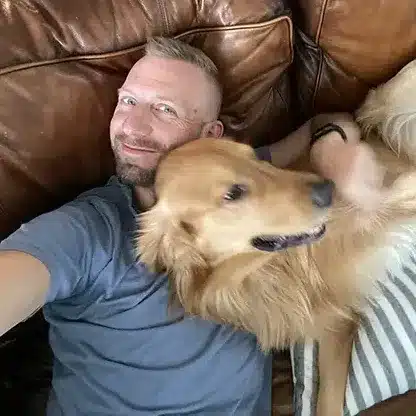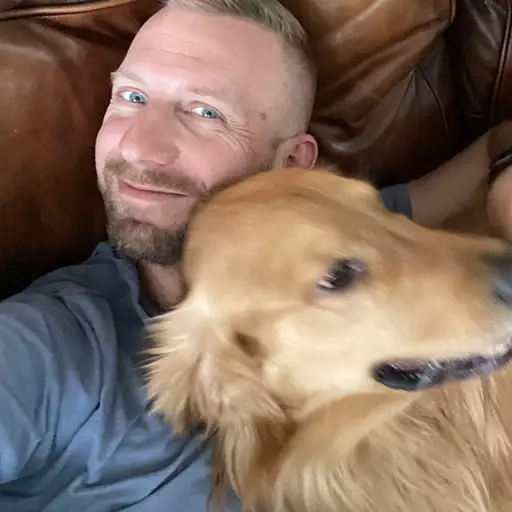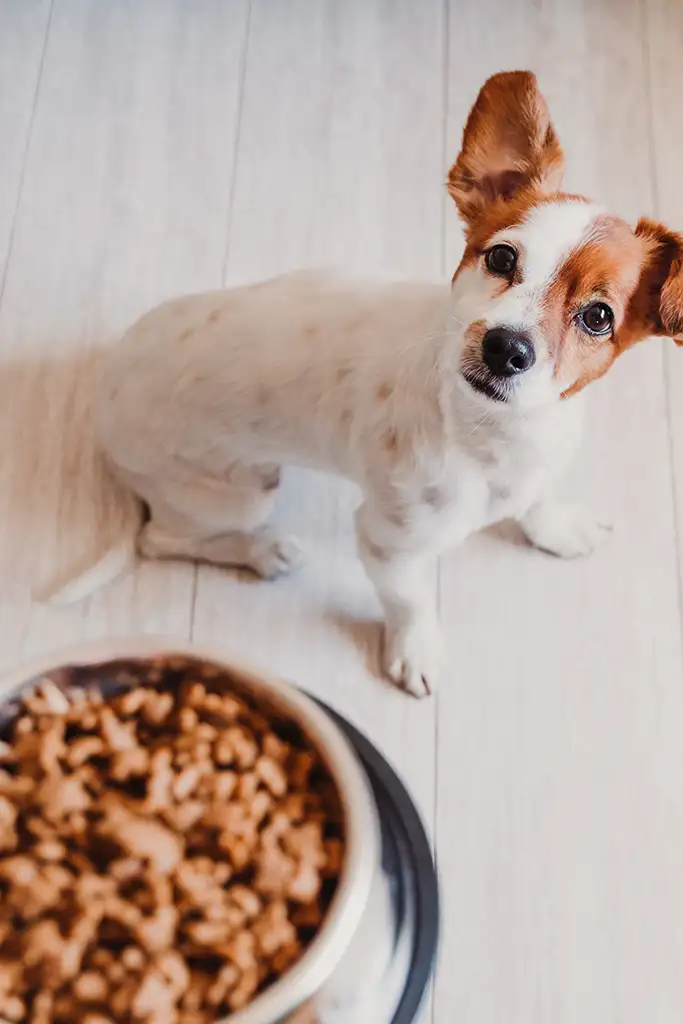Dog Not Drinking Water? 8 Common Causes for Canine Hydration Issues
Quick Guide
Is your dog not drinking water all of a sudden?
If you’ve just noticed your dog’s water bowl remains full and they’re not interested when you prod them to take a sip then you’re not alone.
It’s not uncommon for dogs to refuse water, but it can be concerning to owners and might actually be a sign of something more serious going on with your pups health.
We dive into the symptoms that accompany your dog not drinking below. We also explore the reasons they may not be drinking, why you might be overthinking it, and how to get your dog to drink more water.
Are You Just Worrying Too Much?
There are plenty of non-emergency reasons why your dog may not be thirsty right now. Canines will normally tend to drink more on hot days, after vigorous exercise, and after meals or chew toys. If none of those triggers are present, it is possible your dog is just not thirsty.
Keep an eye on your pup and look for any other symptoms (listed below). Next, check for signs of dehydration.
What To Do If Your Dog Won’t Drink Water
To review, there are many reasons why canines may not want to drink. Some of them can be serious medical conditions that require treatment, while others may be more behavioral in nature.
If you have noticed a sudden change in your pups thirst, here is what to do:
1. Check for other symptoms and call the vet if your dog is not drinking alongside other worrisome signals that something is wrong.
2. Check for signs of dehydration. Call your vet if you are seeing signs that indicate there is dehydration going on as this can cause liver and/or kidney damage if untreated.
3. Eliminate potential behavioral causes like a negative association with the bowl or dirty water.
4. Persuade your dog to drink by adding water to their food, making it have more flavor, or working with your vet to force fluids in an emergency.
How Much Water Should My Dog Drink?
The recommended amount of water for a dog that has a diet of dry kibble is about an ounce per pound per day. This is a ball-park figure and can vary greatly depending on factors like age, breed, exercise, weather and the type of food you are feeding.
If your dog is drinking considerably less – or no water at all – there are some common reasons they may be refusing to have a sip.
Reasons Your Dog Might Not Want To Drink Water
Sometimes canines won’t drink for behavioral reasons that are easy to rule out and fix. It is worth considering and eliminating the following possible causes for your dog’s refusal to drink:
- Did your dog just have surgery? Medications and the trauma of being sedated may lead to abnormal drinking and eating. Be patient and consult your vet about what’s normal after surgery.
- Did something startle your pup while at the water dish? You may not have been there when it happened, but they may have developed a negative association with the bowl or location. Try getting a totally different type of dish and put it in a new place.
- Are you making such a big deal out of trying to coax your dog to drink that you are literally freaking them out? Worrisome owners sometimes bring negative anxiety into situations that dogs pick up on. Try just walking away. You can always measure the amount of water you put in the bowl and check later to see if your best mate is sneaking a drink when you are not looking.
- When is the last time you washed the water bowl? Dogs can be picky about dirty water, or soapy residues if the dish was not properly rinsed. Try cleaning the dish and making sure the water is fresh.
- If your pup is just drinking less than you are used to, but is still not dehydrated, it may be as simple as the fact that your dog just needs less water. Less exercise, cooler temperatures and normal aging are reasons why they may be drinking less.
- Recent changes in diet to canned food can change your dog’s drinking habits considerably. If you recently switched from dry kibble to wet, then expect your pup to drink less.
- Make sure your dog has plenty of opportunities to get outside and urinate. Observe them carefully to make sure they are actually urinating when they go outside. Trouble urinating can be a sign of a serious, potentially emergency condition such as a kidney stone blocking the urethra or a serious infection.
Signs of Dehydration in Your Dog
If you notice that your pup won’t drink then check for signs of dehydration. If your fur baby is choosing not to drink water to the point of dehydration, it is indicative of a problem that needs veterinarian attention.
If your dog is hydrated and not showing other symptoms, then keep an eye on them.
Signs of dehydration in your dog include:
- Tight skin that does not bounce back into place. Pull up the loose skin on the scruff gently. When you let go it should bounce back to normal easily. If there is a delay, or the fold of skin holds its shape for a moment, this is an indication of dehydration.
- Tacky to the touch tongue and/or gums: Dog’s mouths should be wet to the touch on the inside. If they are sticky or dry, it is a sign of dehydration.
- A dry nose can indicate dehydration as well. Some dogs normally have more dry noses than others, so if this is the ONLY sign of dehydration then it is probably not a problem. However, if your pup is dehydrated, it is unlikely they will have a damp nose.
Symptoms that Accompany Dogs Not Drinking
If your dog wont drink water then you should call your vet if it has been going on for more than 24 hours, or if it is accompanied with any other symptoms such as:
- Vomiting
- Diarrhea
- Refusal to eat
- Lethargy
- Panting
- Excessive drooling
- Dark or cloudy urine, or trouble urinating
- Signs of abdominal discomfort
- Any other unusual behavior
Refusing to drink can be a sign of urinary tract infections, hormonal imbalances, liver or kidney problems and other serious conditions that require medical treatment. It’s better to be safe than sorry when it comes to your pup not drinking.
How To Get Your Dog To Drink More Water
If you have verified with your veterinarian that there are no alarming health issues going on, then you may be looking for ways to encourage your dog to consume more water. Here are some things to try:
- Add water to their food. If your pup still has a healthy appetite, then adding water to their food may work to get more fluids in them as a short-term solution. Note that if this works, don’t expect them to be thirsty for additional water. After a few days, try going back to dry kibble to see if they are triggered to get a drink after a dry meal.
- Add flavor to the water. You can dilute some low sodium chicken broth with water (about ¼ part broth to 1 part water) to try to induce your dog to drink.
- Some dogs love to chew on ice cubes. This is a way to trick them into getting more fluids if your pup is a fan of cold and crunchy “ice bones.”
- Some vets will recommend that you use a special syringe (used for administering oral medications) to force fluids if your dog absolutely refuses to drink. It is important that you use the syringe to force water along the inside of the cheeks, and NOT down your pups throat (as this could get water in their lungs). This is a last resort, and should be done only if your veterinarian has recommended it and shown you the proper safe technique.











